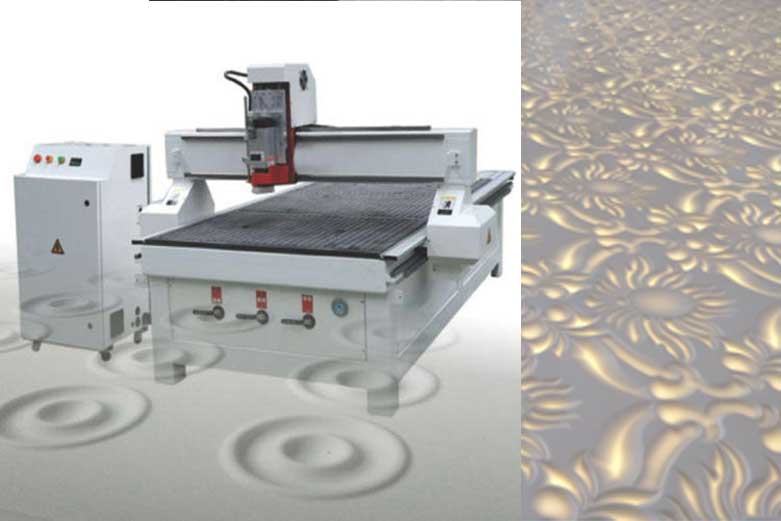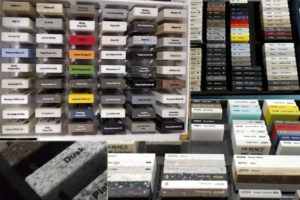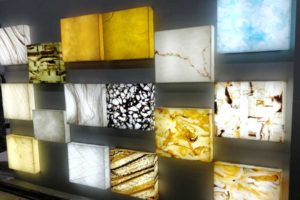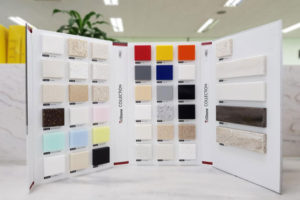What is CNC Router Machine?
What is CNC Router Machine?, CNC Router Machine, CNC Router Cutting work – Computer numerical control (CNC) has been incorporated into a variety of new technologies and machinery. One popular machine used in this form of machining is known as a CNC router. A CNC router is a machine that is very similar to the commonly used handheld router that is utilized for cutting various materials. A CNC router can aid in the cutting of materials like steel, wood, aluminum, composites, plastic, and foam. A CNC router is similar to a CNC mill. It comes with the ability to use computer numerical control to route tool paths that enable the machine to function. CNC routers reduce waste and increase productivity, producing various items in a much shorter amount of time than using other machines.
Applications
A CNC router can be used to produce items such as door carvings, interior and exterior decorations, wood panels, sign boards, wooden frames, moldings, musical instruments, furniture. In addition, it helps in the thermoforming of plastics by automating the trimming process. CNC routers can help ensure part repeatability and sufficient factory output. CNC routers are controlled by a computer. Coordinates are uploaded into the machine controller from a separate CAD program. CNC router are often used with two software applications—one to make designs (CAD) and another to translate those designs into a G-code program of instructions for the machine (CAM) in vertical, horizontal and perpendicular coordinates. As with CNC milling machines, CNC routers can be controlled directly by manual programming, but CAD/CAM allows wider possibilities for contouring, speeding up the programming process and in some cases creating programs whose manual programming would be impractical. The G-code can often be loaded as a vector file on the router control panel. A vector file can be created from a picture file by using a drawing (CAD) software. The human operator selects the machine tool (such as a 0.25-inch v-bit or a 0.75-inch core box bit), speed, cut depth and tool path. For cut path, most machines give the options of tracing the vectors, cutting outside the vectors, or cutting inside the vectors. The operator determines the center point of the part, clamps the part onto the table, moves the bit directly above the marked center and down to the face of the part, and marks this as the starting point. The operator moves the bit up a few inches and selects the run G-code function. The machine begins to cut the design.
USE
CNC routers are controlled by a computer. Coordinates are uploaded into the machine controller from a separate program. CNC router are often used with two software applications—one to make designs (CAD) and another to translate those designs into a G-code program of instructions for the machine (CAM) in vertical, horizontal and perpendicular coordinates. As with CNC milling machines, CNC routers can be controlled directly by manual programming, but CAD/CAM allows wider possibilities for contouring, speeding up the programming process and in some cases creating programs whose manual programming would be impractical. On some controllers the G-code can be loaded as a vector file on the router control panel. A vector file can be created from a picture file by using a drawing (CAD) software. The human operator selects the machine tool (such as a 0.25-inch v-bit or a 0.75-inch core box bit), speed, cut depth and tool path. For cut path, most machines give the options of tracing the vectors, cutting outside the vectors, or cutting inside the vectors. The operator determines the center point of the part, clamps the part onto the table, moves the bit directly above the marked center and down to the face of the part, and marks this as the starting point. The operator moves the bit up a few inches and selects the run G-code function. The machine begins to cut the design.
A CNC router machine is a computer-controlled cutting machine that is used to cut a variety of materials, including wood, plastic, aluminum, and high-density foam. CNC stands for computer numerical control, and it refers to machines that are operated by computer software and electronics rather than by a human operator.
CNC routers typically have three axes, the X-axis, Y-axis, and Z-axis, which allow the machine to move in three dimensions. The X-axis is the longest axis, and it runs from front to back. The Y-axis represents left and right, whereas the Z-axis represents up and down.
CNC routers are used in a wide variety of industries, including manufacturing, woodworking, and architecture. These machines are used to cut out shapes and patterns in materials such as wood and metal. The CNC controller is responsible for controlling this entire machining process. It allows the machine to carve out more accurate and efficient shapes.
Here are some of the benefits of using a CNC router machine:
- Accuracy: CNC routers are very accurate, and they can produce very precise cuts.
- Repeatability: CNC routers can repeat the same cuts over and over again, which is important for manufacturing.
- Efficiency: CNC routers are very efficient, and they can cut materials quickly and easily.
- Versatility: CNC routers can be used to cut a wide variety of materials, which makes them very versatile machines.
Here are some examples of what you can make with a CNC router machine:
- Woodworking projects: CNC routers are often used for woodworking projects, such as cutting out furniture pieces, signs, and other decorative items.
- Metalworking projects: CNC routers can also be used for metalworking projects, such as cutting out metal parts, tools, and sculptures.
- Plastic cutting: CNC routers can also be used to cut plastic, which is a good material for prototyping and manufacturing.
- Other materials: CNC routers can cut a variety of other materials, such as foam, acrylic, and glass.
Computer-aided manufacturing
CAM software makes the CAD drawing/design into a code called G-code. The illustration shows what a bare-bones CNC machine might look like without its computer controller.
Sizes and configurations
CNC routers come in many configurations, from small home-style D.I.Y. “desktop”, to large industrial routers manufactured for commercial use. CNC routers are used in sign shops, cabinet making, aerospace and boat-making. Although there are many configurations, most CNC routers have a few specific parts: a dedicated CNC controller, one or more spindle motors, servo motors or stepper motors, servo amplifiers, AC inverter frequency drives, linear guides, ball screws and a workspace bed or table. In addition, CNC routers may have accessories such as vacuum pumps, with grid table tops or t-slot hold down fixtures to hold the parts in place for cutting. CNC routers are typically available in 3-axis and 5-axis CNC formats. Many manufacturers offer A and B axis for full 5-axis capabilities and rotary 4th axis. Common industrial CNC router sizes include 4′ x 8′ and 5′ x 10.’ Many CNC routers today are made of aluminum extrusion which provide great flexibility as this can be shipped from almost anywhere unassembled but also provides size options. Some popular extrusion used are MakerSlide, V-Slot® linear rail, and 8020 T-Slotted profile.
Materials
Wood
Main article: CNC wood router
FSDAF
A typical CNC wood router
A CNC wood router is a computer-controlled router tool that carves/etches objects or images into the face of a piece of wood. The CNC Router is ideal for hobbies, engineering prototyping, product development, art, and production works. The CNC works on the Cartesian coordinate system (X, Y, Z) for 3D motion control; however, typical CNC operated systems can only make carvings on flat planes. The machine sits on a track and is not capable of making round or spherical cuts. Parts of a project can be designed in the computer with a CAD/CAM program, and then cut automatically using a router or other cutters to produce a finished part. In some instances, the table will not come with a router included. This allows the user to change out routers for different applications. For lighter strained cuts, they could use a lower grade router but for more intensive applications.
Metal
Main article: Milling machine
Milling is the machining process of using rotary cutters to remove material[1] from a workpiece advancing (or feeding) in a direction at an angle with the axis of the tool.[2][3] It covers a wide variety of operations and machines, on scales from small individual parts to large, heavy-duty gang milling operations. It is one of the most commonly used processes in industry and machine shops today for machining parts to precise sizes and shapes.
Stone
A stone CNC router is a type of CNC router machine designed for marble, granite, artificial stone, tombstone, ceramic tiles, glass machining, polishing for arts and crafts, etc. Wood, metal and stone require different “bits” or “inserts”. There is bit call as diamond tools with different diameter 4mm,6mm,8mm mainly used. For wood CNC-ing, bits with sharp cutting edges are used, while for Stone CNC-ing, the bits are made of a metal bar with a sintered layer of extremely hard but roughly shaped particles. Routing CNC is more like grinding than cutting.
Because stone dust is very abrasive, these routers also have much better protection for the guide rails. With “wood” routers the guide rails are often visible from the outside & unprotected, while stone routers are fully covered.
Stone routers also have a water recirculation system. A small jet of water is pointed at the router bit and this captures almost all fine stone dust in the water, which then flows to a collection reservoir where the stone particles settle on the bottom.
Polyurethane foam
Polyurethane foam can also be cut using a CNC router in order to produce complex shapes which would otherwise be difficult or impossible to replicate by hand. Depending on the type of foam being converted, a CNC router would be able to cut through up to an 8lb density. By converting a CAD design file into a CAM file, the CNC Router is able to read relevant information and produce a highly accurate finished product.
CNC Router Cutting Work
SRA Furnisher Solution Pvt Ltd leading Service Provider of CNC Router Cutting Job Work, 3D CNC Cutting Job Work, Corian CNC Cutting Job Work, CNC Jali Cutting Service, CNC Router Cutting.
Backed by the years of experience and knowledge, we are engaged in offering Heavy CNC Router Cutting Job Works in New Delhi, Delhi, India. Our service is widely known for its flawlessness and precise results. The machinery used for executing these services is of premium grade. We offer this services at moderately prices.




